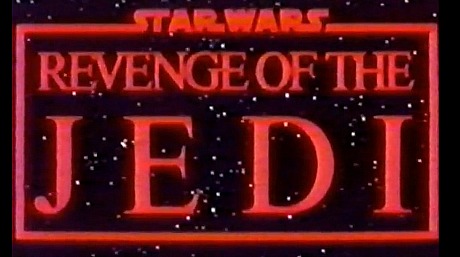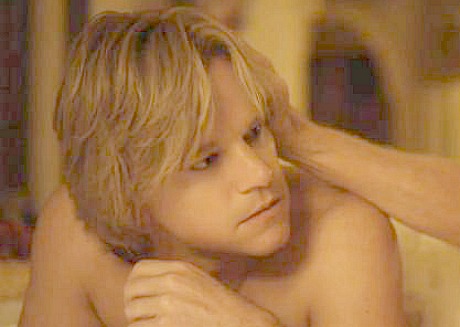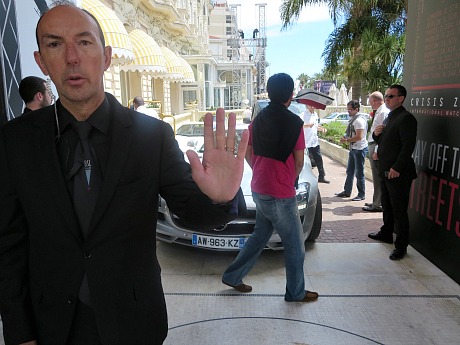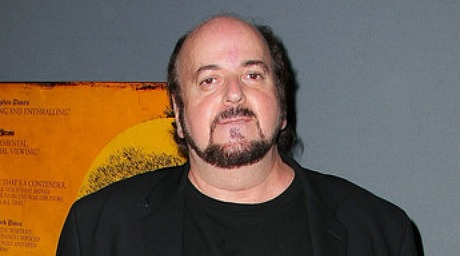



I missed last Saturday’s 30th anniversary celebration of the commercial debut of Return of the Jedi, which happened on 5.25.83. As all true Star Wars fans know, Jedi was a kind of tragedy as it strongly indicated to anyone who was halfway hip that Star Wars creator and Jedi producer George Lucas had sadly evolved into a shameless hack and that the Star Wars series was effectively over and would never again deliver the power, gravitas and coolness of The Empire Strikes Back.

Other than Zack Snyder‘s Man of Steel being the third mega-budget Superman origin story to be released in 35 years and the second within the last seven, the problem, clearly, is going to getting through Russell Crowe‘s “farewell, my son” dialogue. Crowe is a total pro and I completely respect his having held his nose and cashed the paycheck, but all of that “you must lead them, show them the way and give them hope” stuff is awful. And I still say Amy Adams (who was perfectly paired with Mark Wahlberg in The Fighter) looks a tiny bit cougar-ish alongside Henry Cavill.
I hate listening to these courtly parliamentarians (White House Down producer Bradley J. Fischer, producer-writer James Vanderbilt, production designer Kirk Petruccelli) kiss Roland Emmerich‘s ass. All ass-kissing on these suck-up video pieces is inherently boring, and the guys who shoot and cut these things should know that. This aside, I love the smoldering Capitol dome exploding and smoking and flaming all to hell…fantastic. Opening in U.S. and France on 6.28.
In his Vulture review of Steven Soderbergh‘s Behind The Candelabra, Matt Zoller Seitz writes that following about Matt Damon‘s performance as Scott Thorson: “It takes great talent and concentration to play such an opaque soul while still letting us think that we can see into his heart. [Damon] is too old for the part (though the makeup helps sell the illusion a bit), but it doesn’t really matter because he seems to remember what it was like to be a teenager, and lonely, and unformed as a person, and that knowledge infuses the performance.”

I’m not trying to be a nitpicker but I suffered a basic blockage with Alexander Payne‘s Nebraska that I couldn’t get around. The primary plot driver, contained in Bob Nelson‘s script, is a belief by Bruce Dern‘s Woody Grant, an ornery 70-something alcoholic who’s at least partly out to lunch, that he’s won a million dollar prize from a Publisher’s Clearing House sweepstakes drawing.

Random drunk woman to her companions: “What is the Great Gatsby?” And then, a few seconds later: “Siri, what is the Great Gatsby?” — overheard at Hamburger Hamlet via Caroline An Stockstill, sent along to Overheard In LA, posted by Emma G. Gallegos on 5.26.
The fact that the drunken questioner was ignorant is not a problem. Asking was a constructive and intelligent act on her part. It’s the companions who didn’t know either. Think of that — not one of them had even heard that Gatsby was a fictional rich guy in the 1920s, and that he was created by a writer named F. Scott something. Not even a shard of some aspect of this information welled up in their brains. When I was 19 and drunk at 1:30 am you could have pulled me aside and said “who was Voltaire?” and I would have said, “I dunno, some French guy, writer…why?” I would have at least said that.
It’s 8:20 pm, you bet, and I’m sitting in a small park in the 6th arrondissement, and I’ve just pulled out the phone and read that Blue Is The Warmest Color has won the Palme d’Or, and that Nebraska‘s Bruce Dern and The Past‘s Berenice Bejo have won acting awards. Good for them.
Congrats also to Grand Prix Jury prize winner Inside Llewyn Davis, Heli‘s Amat Escalante for winning Best Director (what?), Best Screenplay winner Jia Zhangke for for A Touch Of Sin, and Jury Prize winner Kore-eda Hirokazu for Like Father, Like Son.
So the Dargis-Schwarzbaum complaint about Blue (i.e., too male horn-toady) fell upon deaf ears. “Once Dargis put down Blue Is The Warmest Color in NY Times the jurors felt obligated to ignore her,” a filmmaker friend opines. “All have been her victims. And her review was a clear attempt to show her power, by [attempting to destroy] the momentum of the film.”
David Lowery‘s Ain’t Them Bodies Saints, which I caught last January, is bound together by some very fine narrative connections and textures. It’s all of a piece, and after a while you just start to sink into it and forget about the slowish pacing. Rooney Mara, Casey Affleck and Ben Foster are the stand-outs, but I was particularly heartened by Keith Carradine‘s steely stillwater performance. Carradine, of course, was the star of Robert Altman‘s Thieves Like Us, which Bodies is clearly descended from.
These snaps aren’t particularly haunting or handsome or evocative of anything — they’re just leftovers. But at least they imply a pleasant fiction, which is that the 2013 Cannes Film Festival was a pleasant, warm-weather experience. It was actually one of the most unpleasant film festivals I’ve ever attended in my life from a meteorological perspective. Constant rainshowers, cool gusty winds, dampness, occasional downpours, lost umbrellas, sweaters, damp socks…just awful.

Four or five days ago I had a late morning chat with Seduced and Abandoned director James Toback in his Carlton hotel room. It went on for 40-something minutes, and was candid and hilarious and insightful as usual. Toabck is always on. He is one of the friendliest, funniest and most intellectually open-to-anything guys I’ve ever known in my life. Listen to this — there’s just no one better at shooting the worldly, been-through-it-all-and-I’m-still-chuckling shit about anything and everything. Jim was just waking up as I came in (he had had trouble sleeping), and then he ordered breakfast. But every minute was choice.
